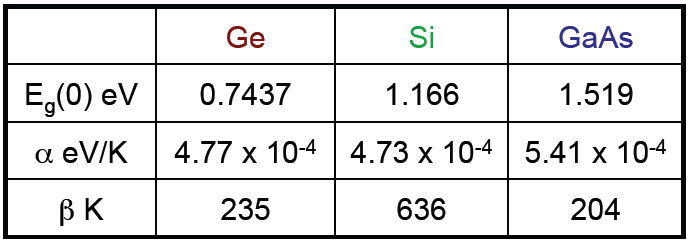It is a common misconception that the higher the temperature higher is the output of the solar cell. This is not true as the efficiency of a solar cell decreases with an increase in temperature and lower efficiency results in lower output power. So in fact, a bright sunny day, with sun rays perpendicular to the solar panel and cool weather is the ideal combination for higher performance of a solar panel.
Let us now look at this in a bit more detail. There are two basic reasons for the decrease in efficiency due to the increase in temperature. One is the decrease in the band gap energy (Eg) and the other is the decrease in open circuit voltage (Voc) with the increase in temperature. The relationship between band gap energy and temperature is quite straightforward and is given as.

One might argue that the decrease in the band gap would allow for more carriers to be transferred to the conduction band and yield a higher output power. However, this is not true as the output power is the product of current and voltage and a lower voltage would reduce the power. In fact, there is an ideal range of band gap which produces the maximum energy. Going too high or too low would not yield the optimum results.
Next, we turn our attention to the open circuit voltage Voc. The relationship between temperature and open circuit voltage is not that straightforward. At first, it might seem the open circuit voltage increases with the increase in temperature as shown in the expression below.
![V_{oc} = \genfrac{}{}{1}{0}{k_{B} T}{e} ln \biggl[1+\genfrac{}{}{1}{0}{J_{L}}{J_{s}}\biggr]](http://24solarhome.com/wp-content/plugins/latex/cache/tex_3ea87d6fa688d693a2bc180dce8479a1.gif)
But in reality, this is not the case. An increase in temperature results in an increase in intrinsic carrier concentration ni which in turn results in higher reverse bias saturation current Js. There is a squared relationship here so an increase in intrinsic carrier concentration would cause a very large increase in reverse bias saturation current. And as is evident from the above formula this causes a decrease in open circuit voltage. This is also shown in the figure below.
So to conclude a bright sunny morning in winter might not be the worst time to produce some solar energy (provided you have got your solar panel tilt right 🙂 ).

